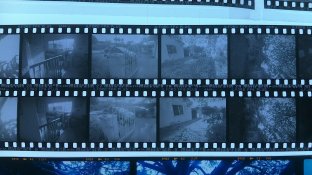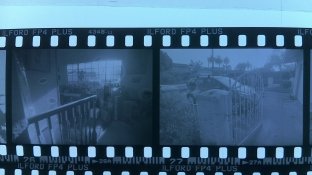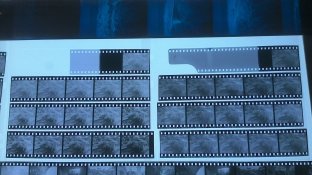Tumbles
Member
I've been trying to get reversal processing to work. My goal is to be able to shoot FP4+ at box speed and have the option of processing it either as a negative or a positive. For a little while I though I might be getting things dialed in, but after 8 tries my results have stopped making any sense and the exposures are all over the map. If I compare a roll developed at 16:00 minutes to one developed at 19:00 minutes, overall the 16:00 minute roll is brighter.
Could the first developer chemistry I'm using be all wrong and bound to cause problems? I suspect that my cameras light meter might be glitching out. I've had problems in the past with the leads in the ISO dial not making good contact. When I had it overhauled 10 years ago, the technician told that the ISO dial is the only thing that isn't weather sealed. Since then it's been through dust storms, rain storms, smoke and fire, ocean spray, and getting dropped in the mud ISO dial first. So, the leads might need a good cleaning by now. Still, I've been shooing a lot of Velvia 50 and Provia recently, and I see no indication of exposure problems.
The second problem is that I'm getting all these weird marks that look like water drops. It seems like drops from one of the baths are sticking to the film in between baths, and continuing to react with the film. I try to get the baths changed out as fast as possible. I really have no idea what's causing this.
Here's all the details of what I'm doing.
1. 1st dev: Rodinal 1:25 with 2g Sodium Thiocyanate, and 250mg Sodium Bromide in 1 liter of distilled water
Development times are from 13:30 to 19:00 minutes
2. 3 tap water rinses, 10, 20, and then 30 inversions
3. Potassium Dichromate bleach, 3 minutes continuous agitation
4. 3 tap water rinses, 10, 20, and then 30 inversions
5. Clearing bath, 2 minutes continuous agitation
6. 3 tap water rinses, 10, 20, and then 30 inversions
7. 1 minute light exposure
8. 2nd developer: XTOL stock 8 minutes
9. water stop bath
10. TF-4 fixer, 6 minutes
11. A thorough rinse
12. Edwal wetting agent bath
The left has 19 minutes of development, while the right has 16 minutes. These are from ISO 12 to 400 in 1/3 stop increments. Some frames are randomly brighter, while in should be a even gradation.

The top has 13:30 minutes of development, while the bottom has 15:30 minutes.

The weird drop like marks. My Nikon Coolscan is out of commission, so this is the best image I could get.

Could the first developer chemistry I'm using be all wrong and bound to cause problems? I suspect that my cameras light meter might be glitching out. I've had problems in the past with the leads in the ISO dial not making good contact. When I had it overhauled 10 years ago, the technician told that the ISO dial is the only thing that isn't weather sealed. Since then it's been through dust storms, rain storms, smoke and fire, ocean spray, and getting dropped in the mud ISO dial first. So, the leads might need a good cleaning by now. Still, I've been shooing a lot of Velvia 50 and Provia recently, and I see no indication of exposure problems.
The second problem is that I'm getting all these weird marks that look like water drops. It seems like drops from one of the baths are sticking to the film in between baths, and continuing to react with the film. I try to get the baths changed out as fast as possible. I really have no idea what's causing this.
Here's all the details of what I'm doing.
1. 1st dev: Rodinal 1:25 with 2g Sodium Thiocyanate, and 250mg Sodium Bromide in 1 liter of distilled water
Development times are from 13:30 to 19:00 minutes
2. 3 tap water rinses, 10, 20, and then 30 inversions
3. Potassium Dichromate bleach, 3 minutes continuous agitation
4. 3 tap water rinses, 10, 20, and then 30 inversions
5. Clearing bath, 2 minutes continuous agitation
6. 3 tap water rinses, 10, 20, and then 30 inversions
7. 1 minute light exposure
8. 2nd developer: XTOL stock 8 minutes
9. water stop bath
10. TF-4 fixer, 6 minutes
11. A thorough rinse
12. Edwal wetting agent bath
The left has 19 minutes of development, while the right has 16 minutes. These are from ISO 12 to 400 in 1/3 stop increments. Some frames are randomly brighter, while in should be a even gradation.

The top has 13:30 minutes of development, while the bottom has 15:30 minutes.

The weird drop like marks. My Nikon Coolscan is out of commission, so this is the best image I could get.












